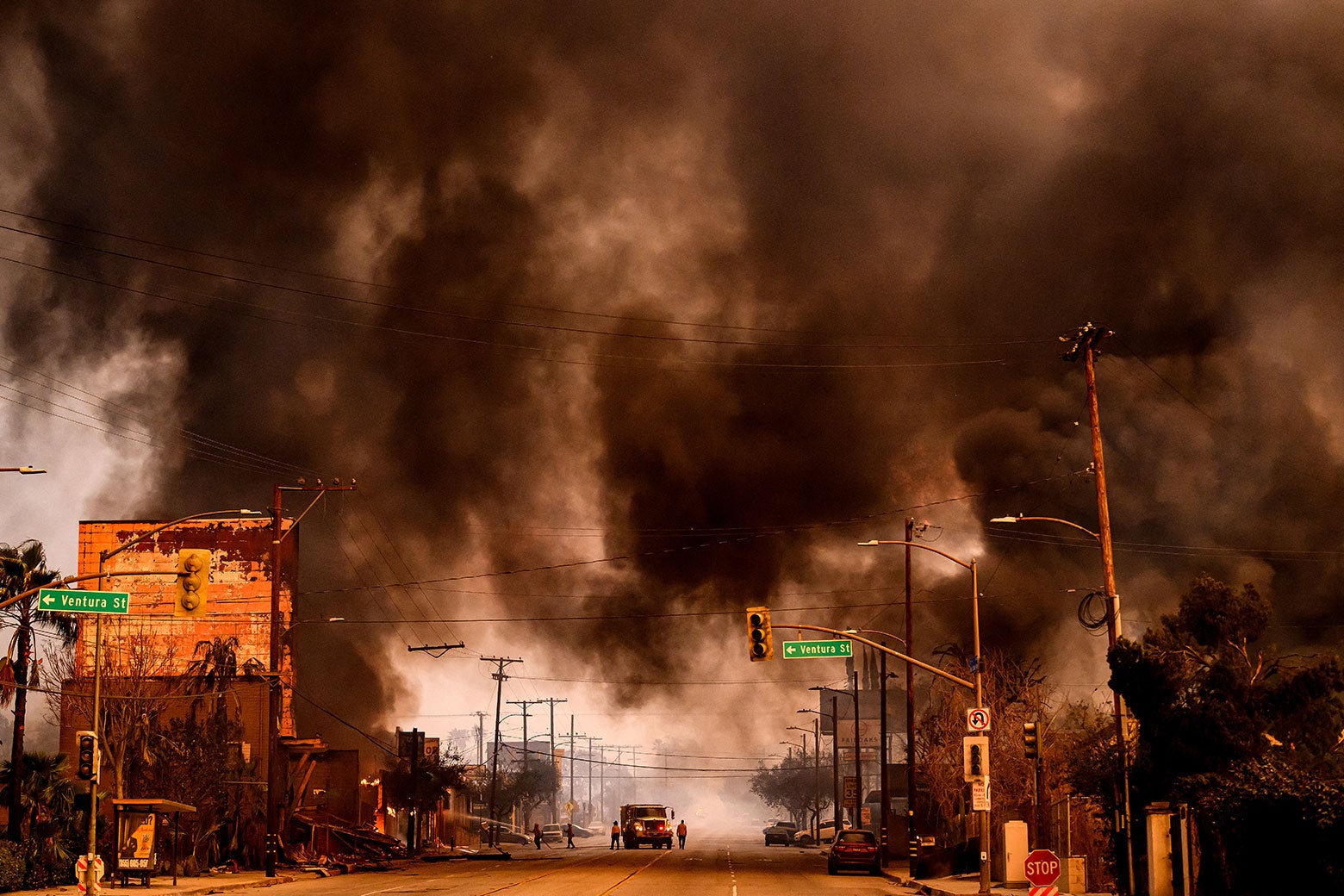Unraveling the Signs: What Led Californians to Evacuate Amidst Devastating Fires
As wildfires rage across California, the stories of residents who have faced the harrowing decision to evacuate are both poignant and instructive. The moments leading up to their departure often contain subtle but significant signs that danger was imminent. This article seeks to explore those critical indicators, shedding light on the experiences of Californians who have had to make life-altering decisions in the face of overwhelming flames and smoke.
The Rising Threat of Wildfires in California
California is no stranger to wildfires; in fact, they have become an annual occurrence that affects thousands of lives. The state’s unique geography, coupled with climate change, has made it particularly susceptible to these devastating events. From the dense forests of Northern California to the dry brush of Southern California, the conditions for wildfires are ripe.
As temperatures rise and drought conditions persist, the risks escalate. According to the California Department of Forestry and Fire Protection (Cal Fire), the state has experienced over 6,000 wildfires in a single year, burning millions of acres. The urgency of the situation demands that residents remain vigilant and aware of the signs that indicate an impending threat.
Understanding the Signs of Imminent Danger
For many Californians, the decision to evacuate comes after recognizing a series of warning signs that make it clear that their safety is at risk. Here are some of the critical indicators that led residents to act swiftly during recent wildfire crises:
- Visible Smoke and Ash: One of the earliest signs of an approaching wildfire is the sight of smoke or ash falling from the sky. This can often signal that a fire is nearby and spreading quickly.
- Changes in Air Quality: Residents may notice a sudden decline in air quality, often accompanied by a distinct smell of smoke. The air may become thick and difficult to breathe, prompting an immediate need for evacuation.
- Emergency Alerts: Notifications from local authorities via text messages, social media, and news outlets can provide critical information about escalating fire conditions and mandatory evacuation orders.
- Unusual Animal Behavior: Pets and wildlife often sense danger before humans do. Uncharacteristic behavior, such as pets refusing to go outside or wildlife fleeing an area, can be a harbinger of impending danger.
- Community Buzz: Conversations with neighbors and friends can reveal shared concerns about fire conditions. If multiple people express worry, it may be time to consider evacuation.
Personal Accounts: When the Signs Became Clear
To better illustrate these signs, let’s delve into some personal accounts from Californians who experienced the urgency of evacuation:
One resident from Santa Rosa recounted how a thick layer of smoke engulfed her neighborhood, turning the sky from blue to an eerie orange. “The moment I saw the ash falling like snow, I knew it was time to go,” she said. Her instincts kicked in, and she quickly gathered her family and essential belongings. It was a decision that likely saved their lives.
Another resident from Ventura County shared her story of noticing the behavior of her dogs. “They wouldn’t stop barking and pacing. It was unlike them,” she recalled. Coupled with the emergency alerts blaring from her phone, she decided to evacuate, a choice she describes as instinctual and life-saving.
Preparing for Evacuation: A Community Effort
In the chaos of a wildfire, preparation is paramount. Communities across California have developed extensive evacuation plans, ensuring that residents are aware of how to respond when fires threaten. Here are some essential steps to take:
- Have an Evacuation Plan: Familiarize yourself with the quickest escape routes from your home and community. Know where the nearest evacuation centers are located.
- Pack an Emergency Kit: Prepare a kit with essentials such as water, medications, clothing, important documents, and pet supplies. Keep it in a readily accessible place.
- Stay Informed: Regularly check updates from local authorities and fire departments. Use apps and social media to stay connected.
- Engage with Neighbors: Create a community network to share information and resources. It’s vital to look out for one another.
The Role of Technology in Wildfire Awareness
In recent years, technology has played a crucial role in enhancing wildfire awareness and response. Mobile applications designed for emergency alerts provide real-time updates on fire conditions, evacuation orders, and safety tips. Social media platforms have become vital tools for disseminating information quickly to the public.
Moreover, advanced monitoring systems, including satellite imagery and drones, allow firefighters to assess fire behavior and direction, improving response times and safety for both residents and emergency personnel.
Staying Optimistic: The Road to Recovery
While the devastation caused by wildfires can be overwhelming, it’s essential to maintain a sense of hope. Communities are resilient, and recovery efforts often bring people together. After evacuations, residents find solace in the support of friends, family, and local organizations that aid in recovery and rebuilding efforts.
Local governments and NGOs work tirelessly to provide resources and assistance for those affected. From temporary housing to counseling services, these initiatives foster a sense of unity and hope amid adversity.
Conclusion: The Importance of Vigilance
As Californians continue to face the threat of wildfires, understanding the signs that lead to evacuation is crucial. The experiences shared by those who have evacuated highlight the importance of vigilance and preparedness. By recognizing the signs and acting swiftly, residents can protect themselves and their loved ones from the devastating impacts of wildfires.
Ultimately, while the threat of wildfires remains a reality, communities can come together to create a culture of awareness and resilience, ensuring that when the flames come close, they are ready to face the blaze with courage and determination.
See more Your Daily Weather



